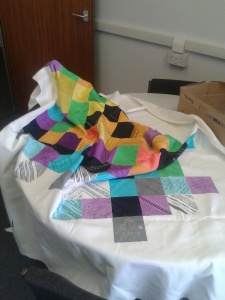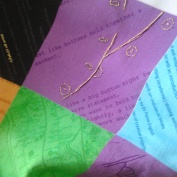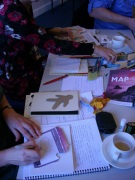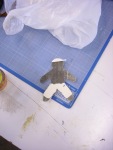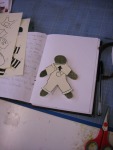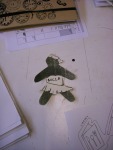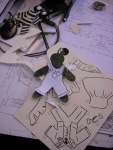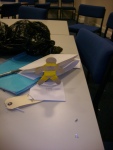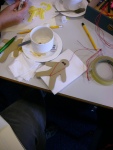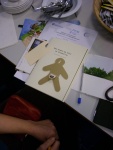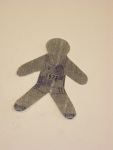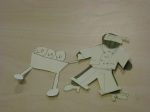Come and join us on November 8th 2016 at Middleport Pottery in Longport (near Stoke-on-Trent) to find out about using genre as pedagogcial resource. The first in a series of Writing-PAD events this academic year focusing on genre(s), this day introduces a theoretical framework for exploring genres and their affordances, including a recent example of how this can work as pedagogical practice. Via a tour of this very special venue, we will not only explore a valued English Heritage site, but also use this as a starting point for playing with the idea of genre and regenring in our own teaching practices. The day will also include the launch of the recently published book Writing Essays by Pictures by Alke Groppel-Wegener.
Cost £145 : Includes the whole day, with refreshments on arrival and in the afternoon, a delicious buffet lunch, a special tour of the venue and your own copy of Writing Essays by Pictures.
Book via Eventbrite: https://www.eventbrite.co.uk/e/thinking-through-genre-exploring-genre-as-pedagogical-resource-tickets-28084047141?aff=eac2
(Draft) Programme:
10-10.30 Registration and Refreshments
- Let’s start the day as we mean to continue by making our own name-tags – regenring a tiny part of conference/symposium tradition into something more expressive.
10.30-11 Welcome
11-12 Genre as Pedagogical Resource by Dr Fiona English
- Fiona introduces a theory that could frame genre as pedagogical resource, updating thoughts from her book Student Writing and Genre.
12-12.30 Writing Essays by Pictures by Dr Alke Groppel-Wegener
- Alke shares the story of the development of her recently published book Writing Essays by Pictures, an example of regenring the traditional study skills textbook into a picture/work-book.
12.30 – 1 Discussion
1-2 Lunch
2-3.30 The Pottery and beyond
- Explore Middleport Pottery via a special tour and then use this experience to start thinking about ways of genring teaching practices.
3.30 – 4.15 Linking Theory and Practice
- Fiona and Alke start us off using the Writing Essays by Picture books as an example to explore gains and losses of this particular regenring process to demonstrate an example of using the theoretical framework established at the beginning of the day. We will then move into the discussion of the outcomes of your genring activities.
4.15 – 4.45 Discussion of the day
4.45 End
The Speakers
Dr Fiona English is Honorary Senior Research Associate at UCL Institute of Education with a background in linguistics and language and literacies in education. Much of her research has been concerned with student writing and academic literacies, with her book Student Writing and Genre using a social semiotic perspective to explore the relationship between genre and the production of academic knowledge. More recently she has published Why do Linguistics?: Reflective Linguistics and the Study of Language with Tim Marr.
Dr Alke Groppel-Wegener is Associate Professor of Creative Academic Practice at Staffordshire University and a National Teaching Fellow. Having trained as a theatre designer but ending up teaching study skills, she became frustrated with the traditional ways of teaching academic practice, which has led her to develop her own approach being inspired by the creative processes of art and design and collated her strategies as Writing Essays by Pictures: A Workbook for students. She blogs at www.tactileacademia.com.
The Venue
Middleport Pottery is home to Burleigh Ware, which is still made on site using traditional craftsmanship. (And there is a shop where you can get your own Burleigh Ware, too). It was restored with the help of the Princes Regeneration Trust, has become a top visitor attraction and the home of The Great Pottery Throwdown.
It is a short walk from Longport Train Station, a 5 minute train ride from Stoke-on-Trent, and we would encourage participants to use public transport.
Please note that this is an old site and some of the areas are cobbled and might present a problem for people with mobility issues. It is advised that you wear sturdy shoes (no high heels) for the tour, and that you let the organiser know of mobility issues in advance, so that she can discuss your needs.
The Series
This exploratory workshop is the first in a series that will stretch through the academic year and culminate in a special issue of the Journal of Writing in Creative Practice.
Through discussion within the Writing PAD community, we know that very often lecturers, and particularly practitioner/teachers, are doing a lot of interesting things in their teaching, but they seem to lack the confidence to share this work, specifically within the academic conventions of publication beyond a description of what they are doing.
To address this, we have decided to pick the focus of Genre, Genring and Regenring for this academic year, and are organising a series of events that will provide support for this issue and culminate in one (or possibly two) special issues of the Journal of Writing in Creative Practice, guest edited by Fiona English and Alke Groppel-Wegener.
The other events in planning are:
- a first follow-up in February 2017 which explores the traditions and conventions of academic writing. There will be speakers in the morning, which are still to be confirmed, but we are talking to Julia Molinari, Lisa Clughen and Julia Lockheart, who will explore academic writing as a genre – and discuss the changes it is going through. The afternoon will be given over to a sharing session/exhibition where delegates have the opportunity to show off examples of their genre-ing and regenring practice, either as artefacts or in a poster format. The will allow the opportunity for people to share best practice, but also to get feedback and ideas for potential research designs in order to explore their practice more and on a more theoretical level. This event will probably be held at De Montford University in Leicester.
- A second follow-up in the form of an academic conference, either at Easter time or early May 2017. Here people can share their practice in an academic format, and those presentations could use the feedback from the conference to inform papers for the Special Journal edition. This might be hosted at Nottingham Trent University or Staffordshire University.
- If there is interest, there are plans for a writing retreat to facilitate the writing of the papers, possibly at Nottingham Trent University.
We are currently investigating funding to keep costs down, but it might be the case that we need to break even on this. You will not have to attend all these events to be considered for the special issue, but as we are trying to build up a mutually supporting network, it would be nice if you could come and join us at as many as possible.

